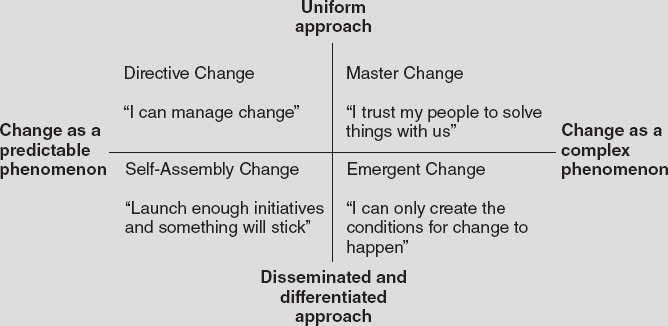Approaches to Change
1) The directive approach to change
The directive approach to change is predicated on a belief that change is essentially straightforward and predictable. This approach asserts that change can be achieved uniformly across the organization by giving clear direction on what needs to be done. It is a top-down approach, where people are given prescribed steps to follow. Key messages are sent out from the centre to be ‘cascaded’ through the organization. Change is often delivered through a series of projects. People are expected to get on with it, and those who don't are seen as problematic. There is likely to be much conversation about getting buy-in and overcoming resistance. This approach is likely to be very familiar to you as it is far and away the most common approach. It is also, as we shall see, one of the least successful.
Supplement 5.10 Higgs model

Reprinted with permission from M. Higgs (2010) Change and its Leadership: The Role of Positive Emotions. In A. Linley, S. Harrington and N. Garcea (Eds.) Oxford Handbook of Positive Psychology and Work. Oxford: Oxford University Press. Also, by permission of Oxford University Press, Inc (www.oup.com)
2) The self-assembly approach to change
The self-assembly approach is similar to the directive approach, except that there is more flexibility for local areas to decide how they implement the change. The centre ...
Get Positive Psychology at Work: now with the O’Reilly learning platform.
O’Reilly members experience books, live events, courses curated by job role, and more from O’Reilly and nearly 200 top publishers.

